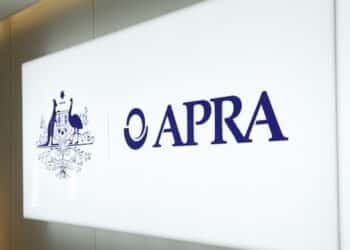According to Reserve Bank of Australia (RBA) governor Michele Bullock, inflation will remain the “crucial challenge” for the economy over the next “one to two years”.
During a panel session at the ASIC Annual Forum on Tuesday, Ms Bullock discussed the inflation issues that drove Australia’s central bank to raise interest rates to a 12-year high of 4.35 per cent this month.
“There is a bit of a perception around that the inflation at the moment really is all a supply-driven thing – petrol prices, rents, these sorts of things, energy,” Ms Bullock said.
“But actually, there’s an underlying demand component to it as well and that’s what the central banks are trying to get on top of.”
The RBA’s latest meeting minutes, released shortly after the panel session on Tuesday, reiterated that board members elected to hike the cash rate in November due to the risks that inflation will take longer to return to target than previously expected.
“Members noted that the risk of not achieving the board’s inflation target by the end of 2025 had increased and that it was appropriate that monetary policy should be adjusted to mitigate this,” the meeting minutes read.
“They observed that delaying such an adjustment would create a risk that a larger monetary policy response might be required in coming months, especially if inflation pressures turned out to be stronger than expected.”
The board members stressed the importance of preventing inflation expectations from becoming entrenched, given the potential impact on price settings.
“They agreed there was a risk of inflation expectations increasing if the board left the cash rate target unchanged at this meeting, particularly given the board’s repeated statements that it has a low tolerance for inflation returning to target after 2025,” the minutes said.
“Members also noted that the staff’s inflation forecasts would be for higher inflation if they had not been predicated on one or two rate rises.”
According to its latest statement on monetary policy, the RBA now expects headline inflation to ease to 4.5 per cent by the end of the year, up from 4.25 per cent in its previous forecast published in August.
Inflation is then tipped to ease to 3.5 per cent by the end of 2024 (up from 3.25 per cent) before hitting the top end of the target range (3 per cent) by the end of 2025 (revised up from 2.75 per cent).
In the November meeting minutes, the RBA said that whether further tightening is needed to bring inflation back to target in a reasonable timeframe is dependent on “how the incoming data alter the economic outlook and the evolving assessment of risks”.
“In making its decisions, the board will continue to pay close attention to developments in the global economy, trends in domestic demand, and the outlook for inflation and the labour market. The board remains resolute in its determination to return inflation to target and will do what is necessary to achieve that outcome,” it said.
Westpac chief economist and former RBA assistant governor Luci Ellis said the RBA was poised to act if it observes further upward surprises for demand and inflation.
“Unless they continue to be surprised in the way they have recently, they are likely to be on hold, but every meeting next year should be considered ‘live’,” she said.
“As the minutes acknowledged, the board has low tolerance for any further upside surprises or delays in the return of inflation to the target range.”
ANZ senior economist Blair Chapman said the big four bank expects the cash rate will remain on hold at 4.35 per cent, but added that risks are “tilted to the upside”.
“With the next quarterly CPI release not until late January and the most recent wage and labour force data impacted by temporary factors, our view is that the RBA will wait until February before considering hiking again, with additional data informing an updated set of forecasts to be presented to the board at that meeting,” he said.
Productivity and supply shocks
During her appearance at the ASIC Annual Forum, Ms Bullock also discussed recent wages growth and the challenge of productivity. The wage price index (WPI) rose 1.3 per cent in the September quarter and was up 4.0 per cent on an annual basis.
“We haven’t had any productivity growth in Australia for a number of years and although wage rises of around about 4 per cent in a normal context of productivity growth aren’t necessarily inconsistent with our inflation target, if we don’t have any productivity growth, they’re on the high side and they’re going to contribute to rises in costs,” she said.
“We know that unit labour costs as measured in the last few years have been rising quite substantially. Six, 7, 8 per cent, depending on how you might measure it. So that’s not helpful for the inflation thing.
Additionally, Ms Bullock weighed in on recent geopolitical tensions and fragmentation, which she said are increasing the risk of further supply shocks in the future.
“Prior to the pandemic, we were living in a world of increasingly open trade. There was arguably a big deflationary impulse coming from China and Asia,” the RBA governor said.
“In a world of fragmentation and conflicts and so on, we’re going to see more potential for supply shocks and although you want to look through supply shocks, if you keep getting them, there comes a point where everyone just expects inflation to remain high and if inflation expectations adjust, then that’s a problem.”







